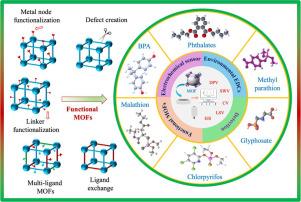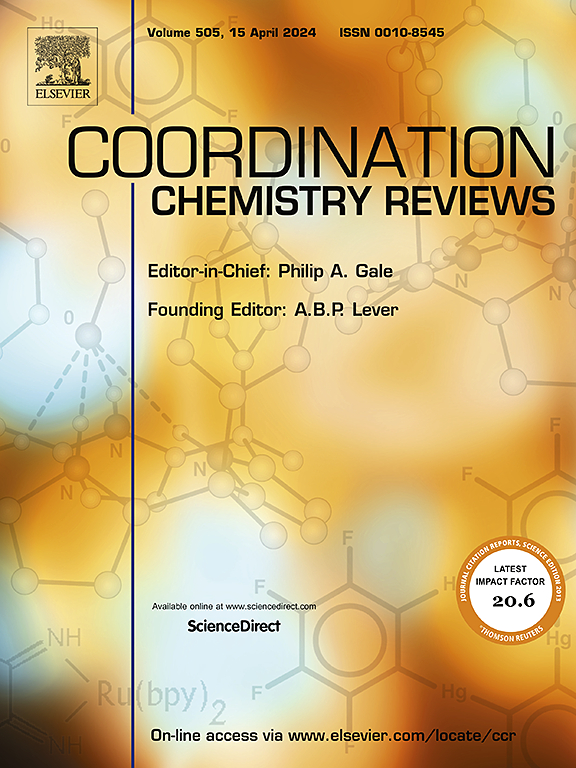MOFs and their derivatives: Functionalization strategy and applications as sensitive electrode materials for environmental EDCs analysis
IF 20.3
1区 化学
Q1 CHEMISTRY, INORGANIC & NUCLEAR
引用次数: 0
Abstract
Endocrine-disrupting chemicals (EDCs) are a category of exogenous organic pollutants that pose substantial hazards to human health and the environment due to their ability to disrupt the functioning of the endocrine system. However, implementing suitable technology is one of the most effective ways to address EDCs. Electrochemical sensors provide cost-effective and fast solutions to this challenge, using metal-organic framework (MOF) technology. MOFs, as a distinct hierarchical structural class, offer diverse topologies, tunability, reactivity and porosity, but their lower conductivity and instability limit their effectiveness in electrochemical sensor applications. The study focuses on investigating the functionalization strategy of the outer and inner surfaces of MOF crystals, which involves introducing functional groups, replacing components, incorporating guest molecules, defect engineering and hybrid composite construction. We explore the latest advancement in electrochemical sensors based on MOFs, emphasizing their use in the recognition of environmental EDCs. The oxidation mechanisms of EDCs on the electrode surface were also discussed. In this review, we provide clear and straightforward guidance for the structural design of MOFs as well as the improvement of durable, efficient and resilient portable electrochemical sensors for environmental EDCs detection. Furthermore, this work addresses current challenges and highlights the future prospects of MOFs as sensor materials for environmental EDCs analysis.


求助全文
约1分钟内获得全文
求助全文
来源期刊

Coordination Chemistry Reviews
化学-无机化学与核化学
CiteScore
34.30
自引率
5.30%
发文量
457
审稿时长
54 days
期刊介绍:
Coordination Chemistry Reviews offers rapid publication of review articles on current and significant topics in coordination chemistry, encompassing organometallic, supramolecular, theoretical, and bioinorganic chemistry. It also covers catalysis, materials chemistry, and metal-organic frameworks from a coordination chemistry perspective. Reviews summarize recent developments or discuss specific techniques, welcoming contributions from both established and emerging researchers.
The journal releases special issues on timely subjects, including those featuring contributions from specific regions or conferences. Occasional full-length book articles are also featured. Additionally, special volumes cover annual reviews of main group chemistry, transition metal group chemistry, and organometallic chemistry. These comprehensive reviews are vital resources for those engaged in coordination chemistry, further establishing Coordination Chemistry Reviews as a hub for insightful surveys in inorganic and physical inorganic chemistry.
 求助内容:
求助内容: 应助结果提醒方式:
应助结果提醒方式:


